Politics
How the National Press Club shapes politics, policy, and media in Australia
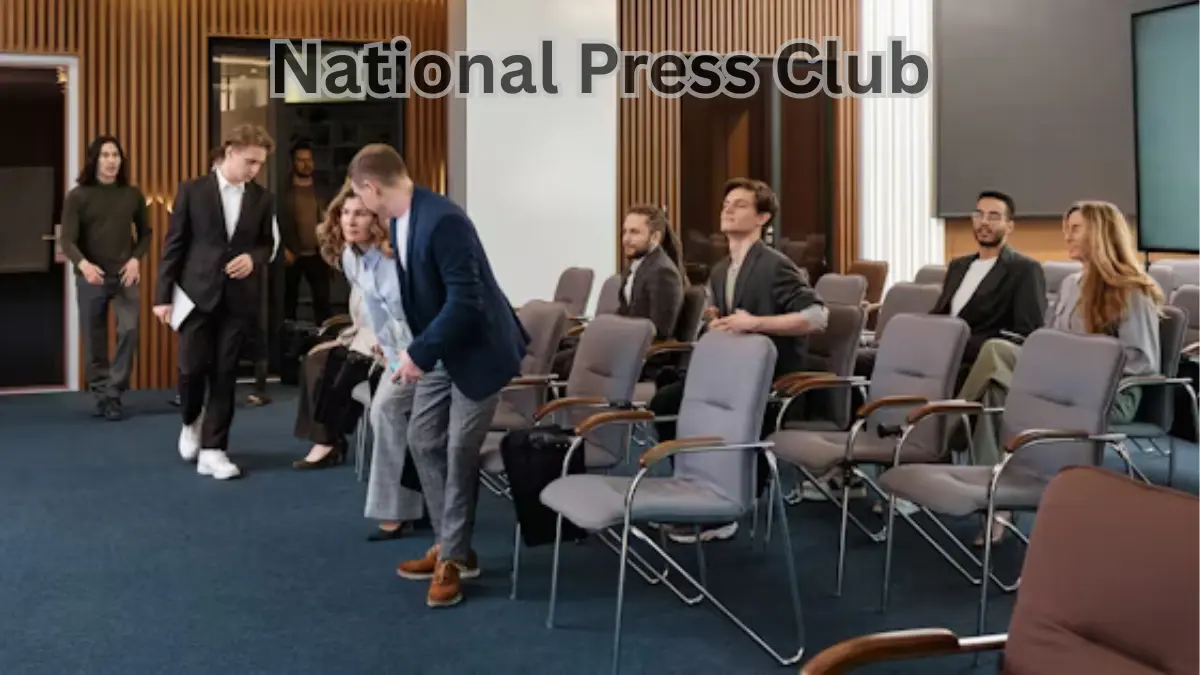
The National Press Club of Australia (NPC) is a place where Australians often think of powerful speeches that impact politics, business, and society. The NPC is the best place in the country for newsmakers to meet. It brings together journalists, officials, and the public to talk about important problems that affect Australians.
What is the National Press Club?
The National Press Club of Australia (NPC) is a place where Australians often think of influential speeches that shape politics, business, and society. Established in 1963, the NPC is recognised as the nation’s leading platform where journalists, leaders, and the public come together to debate issues that matter to Australians.
The club is famous for its weekly broadcast speeches, in which leaders from politics, business, academia, and the community answer questions from journalists before a live audience reads more smoothly. These events have had a significant influence on national conversations or shaped public debate in Australia.
Why the National Press Club matters to Australians
The National Press Club is important to Australians because it serves as a key platform for public debate, holds governments accountable, fosters media freedom, and promotes a well-informed public through widely reported speeches by politicians, experts, and thought leaders.
It provides Australians a national platform that connects them directly with current events, the country’s situation, foreign affairs, and vital policy issues. Through promotion and public debate, they stay updated on every aspect of the nation’s economy. The NPC is more than just another media company; it connects people who make decisions with the public.
Here are some reasons why it matters to Australians:
- Transparency in leadership: Australians can hear directly from prime ministers, opposition leaders, and prime ministers about policy decisions.
- Platform for accountability: Journalists ask unprepared questions, and they typically hold leaders accountable in real time.
- Diverse perspectives: In addition to politicians, speakers include scientists, activists, business leaders, and guests from other countries.
- Public access: Australians can watch the debates from home on ABC and Sky News.
Key moments in National Press Club history
Key moments in the National Press Club (NPC) history include its founding in 1908 by 32 newspapermen, the 1923 demonstration of experimental television, President Calvin Coolidge laying the cornerstone of the National Press Building in 1926, the National Press Building in 1926, the NPC luncheon with British Prime Minister Ramsay MacDonald in 1933, and Dr.’s 1962 visit. Martin Luther King Jr. as the first African American to address a club luncheon forum. Other significant events are the 1972 speech by Gloria Steinem that led to the club’s changing gift-giving tradition from ties to mugs, and the 2014 appearance of Supreme Court.
Here’s a breakdown of some highlights
- March 12, 1908: 32 reporters established the NPC to function as a social centre for the press, and 17 years later, a meeting was held at the Willard Hotel.
- April 3, 1915: The Secretary of State, William Jennings Bryan, made one of the first intercontinental phone calls to the San Francisco Press Club from the NPC lounge to commemorate its opening.
- April 28, 1923: The Club held one of the first experimental television displays.
- April 8, 1926: President Calvin Coolidge laid the cornerstone of the NPC’s new building.
How is the National Press Club working
The National Press Club is an institute based on membership that provides journalists and media professionals with a hub where networking, education, and professional development are made available. It is a place where newsmakers may share their thoughts and problems with the public, members can share information with each other, and it fights for press freedom and the dignity of the profession. Members can use the facilities, go to classes, and take part in events that connect them to national conversations and help them move up in their careers.
What is the role of journalism at the NPC?
- Education and development: The Journalism Institute offers training and courses for journalists at all career phases to adapt to changing media landscapes and learn new skills.
- Recognizing excellence: The club holds awards ceremonies to recognize excellent journalism and communication work, as well as individuals and organizations who make major contributions to the media.
- Press advocacy: The National Press Club Journalism Institute actively works on every issue; however, issues related to freedom.
- Supporting education: The institute provides scholarships and educational programs to eligible students to encourage their participation.
How to Visit the National Press Club
If you live in Canberra, the National Press Club is not just for journalists. The club offers:
- Some events provide public tickets.
- Individual and organisational membership packages.
- Dining facilities are available at the Barton location, which also hosts lectures and networking events.
Note: Attending an NPC event may be both exciting and educational for Australians interested in politics, policy, or journalism.
Conclusion
In an age when information flows quickly and public trust is eroding, the National Press Club of Australia continues to provide a reliable, respectable forum for open debate. It connects leaders with ordinary Australians, ensures accountability, and gives a platform to the major issues determining the country’s future.
For Australians who value democracy, journalistic integrity, and informed public debate, the NPC remains an essential institution.

Politics
David Sharaz: profile, controversies and public impact in Australia

David Sharaz has become well-known in Australia through his work in communications, politics, journalism, and law. Many Australians are familiar with both his career experience and recent legal troubles. This article investigates who he is, what he has done, and why his story is significant — particularly in today’s climate of media scrutiny, public accountability, and political communication.
Who is David Sharaz? Unpacking the story
David Sharaz has become a highly notable public figure in Australia, gaining widespread attention whether in the media or in politics. His name is directly linked with his fiancée and former Liberal staffer Brittany Higgins, and one major reason for this prominence is the sexual harassment allegations that arose in Parliament House.
This article explains the journey of David Sharaz, his professional background, his involvement in one of Australia’s most high-profile political stories, and the subsequent developments that have kept him in the public eye.
Many Australians find that knowing the people behind big news stories helps them understand the issues better. Sharaz’s story proves how the lives of people working in the media are affected, how they often have little control over their own lives, and how public advocacy influences them.
From broadcast journalism to political advisory
David Sharaz began his career in broadcast journalism, which quickly brought him fame and public recognition. His good work built a strong connection with the community, and he established himself on the path of success. In addition, his friendships with many well-known Australians greatly supported him in his professional journey.
Here are some professional experience of david sharaz:
- WIN News: He worked as a journalist and broadcaster in rural towns such as Canberra, Wollongong, and Cairns.
- Sky News Australia: Sharaz dedicated much of his time to national news channels; therefore, his reporting was based on the activities taking place there.
- Southern Cross Austereo: He also worked as a co-host on many TV shows, which further enhanced his abilities and brought him closer to the public. On these shows, he engaged in daily conversations about current events.
He was very skilled because he had a lot of experience in the media. He knew how newsrooms worked, how to frame a story, and how to talk to the audience in a way that worked. These traits would be very important for him in his next jobs and while Brittany Higgins’ story was being told to the public.
A shift into the world of politics
After ten years, Sharaz switched from journalism to politics. He was a media advisor for the Australian Public Service, where he helped a number of government agencies. This change put him on the other side of the media equation, where he was in charge of government communications instead of reporting on them.
He knew a lot about how the media and politics work together in Australia because he had worked in both journalism and government communications. This dual perspective is pretty rare, which made him a great operator in the high-stakes world of political propaganda.
He worked behind the scenes instead of in front of the camera, which is what he did in broadcasting. But soon everyone would know about his life.
The Brittany Higgins story and Sharaz’s role
When Brittany Higgins said in 2019 that a coworker had sexually assaulted her in Parliament House, David Sharaz became a key player in the public conversation. Her boyfriend Sharaz was very helpful and made sure that the plan for getting the news out about her story worked.
He knew a lot about the media, which was very helpful. As the political editor of “The Project,” Samantha Maiden, and Lisa Wilkinson are just two of the well-known writers that he helped Higgins talk to. This planned move made sure that her story was told in her own words and got attention across the country. The claims got a lot of attention because Sharaz knew how the news worked. This led to a national talk about safety, responsibility, and the way people work in Australia’s political institutions.
He had changes in both his personal and work life because he was engaged. Sharaz has talked about how tense and stressed out things were between him and Higgins. A lot of people talked about them in public and in the news, and their lives were in the news.
The defamation case and its aftermath
There were a lot of court cases related to the Higgins story, but the most famous one was the defamation case that Bruce Lehrmann, the man accused of attacking Higgins, filed against Network Ten and Lisa Wilkinson. Lehrmann was not found guilty in a criminal trial that was stopped because of juror misconduct. The charge was eventually dismissed because of worries about Higgins’ mental state.
The defamation case looked closely at David Sharaz’s acts and communications. Leaked text messages and audio recordings were very important pieces of evidence that helped explain how Higgins’ tale got out. The court looked closely at the reasons and techniques used by Sharaz, Higgins, and the journalists involved.
Justice Michael Lee’s decision in this case was a big deal for the Federal Court. Justice Lee decided that it was more likely than not that Lehrmann had raped Higgins. This decision was a big win for Higgins and, by implication, for Sharaz, who had been there for her the whole time.
Where is David Sharaz now?
After a lot of public and legal fighting, David Sharaz and Brittany Higgins moved to France. They said they moved to get away from the overwhelming media attention in Australia and find tranquilly and start over. Sharaz has kept up a strong presence on social media, typically talking about Australian politics and media concerns from a distance.
He is still a divisive person. His fans say he is a loyal partner and a smart media strategist who helped bring a very important topic to the attention of the whole country. It is a case study of how powerful the media can be, how hard it is to get justice, and how much you have to give up to be a public advocate. His rise from provincial journalist to a pivotal character in a national political drama shows how unpredictable the roads that define public life in Australia can be.
No matter what people think, David Sharaz’s narrative is an interesting part of Australia’s recent political history. It is a case study of how powerful the media can be, how hard it is to get justice, and how much you have to give up to be a public advocate. His rise from provincial journalist to a pivotal character in a national political drama shows how unpredictable the roads that define public life in Australia can be.
Politics
Who Is Troy Bramston? The most popular political biographer and journalist in Australia
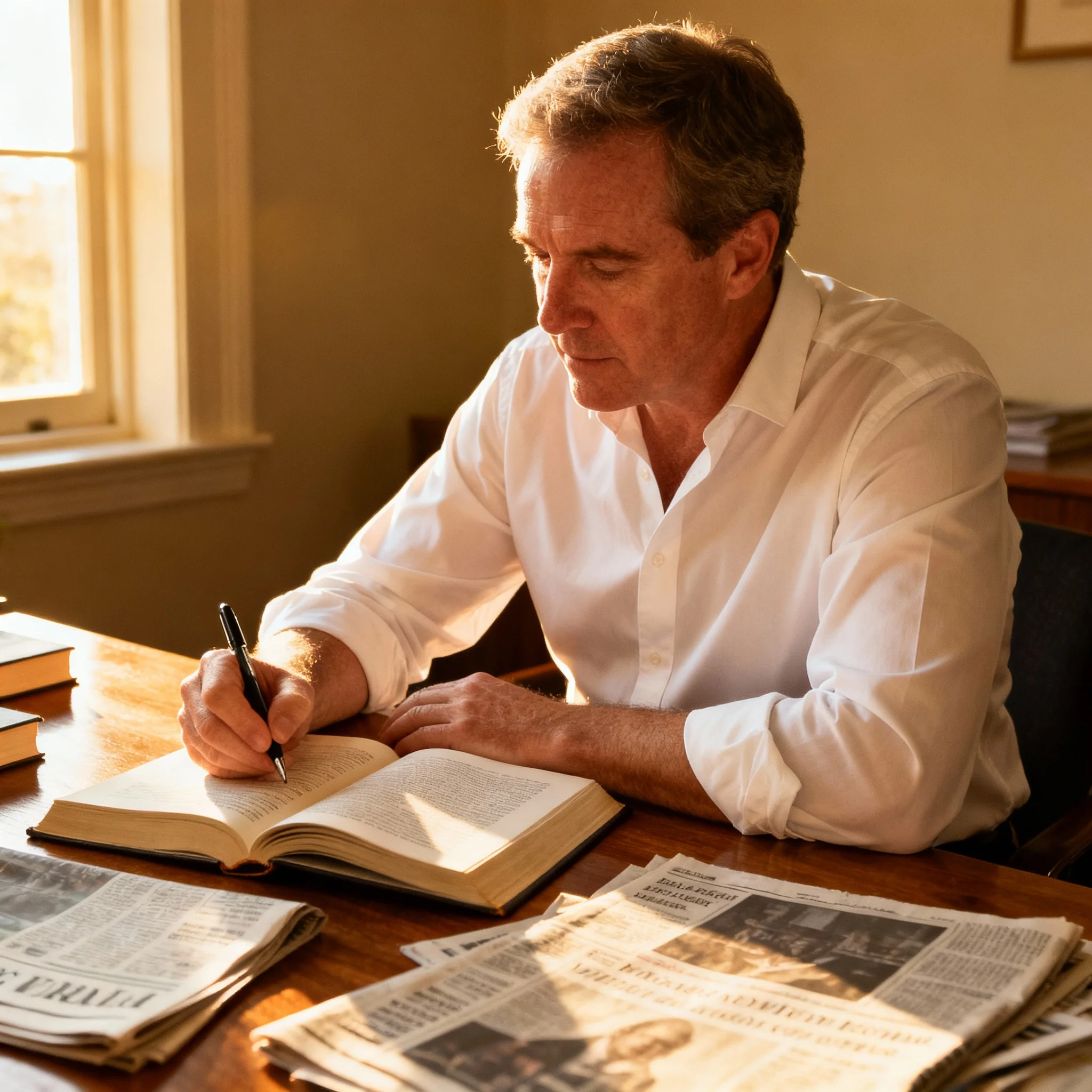
Troy Bramston is considered one of the most renowned political journalists and biographers in Australia, becoming the best chronicler of the lives of the prime ministers in the country. Bramston has been a senior writer and columnist in The Australian newspaper since 2011 and has proven himself as an authoritative commentator on Australian politics and history.
Childhood and Politics
Troy Bramston had a long history in the politics of the Australian Labour Party before becoming a journalist. He had spent the previous ten years as an adviser to federal Labour politicians, both in government and opposition. However, most significantly, he was the main speechwriter to Kevin Rudd and an adviser to the Rudd government. His political experience dates back almost 20 years, where he has been 20 years as a party member and served the party in different positions, including the President of NSW Young Labour.
Such inside experience of Australian politics has given Bramston the distinct insights that guide his biographical work and other political commentaries. His change in the role of political adviser to that of journalist and historian is a natural extension of his extensive knowledge of the Australian political process and personalities.
Novelist and Biography-writer
Troy Bramston is the author or editor of 12 books and the most valued political biographer in Australia. His books contain definitive biographies of some of the most important prime ministers in the history of Australia:
Recent Major Works:
- Gough Whitlam: The Vista of the New (2025) – billed as the definitive biography of the 21st prime minister of Australia and the first such biography published since the death of Whitlam in 2014.
- Bob Hawke: Demons and Destiny (2022) – the sole biography Hawke has ever agreed to have written since he exited the prime minister’s office.
- Robert Menzies: The Art of Politics (2019) – a groundbreaking biography of the longest serving prime minister of Australia.
- Paul Keating: The Big-Picture Leader (2016) – shortlisted in the Walkley Award and shortlisted in the National Biography Award – final.
Collaborative Works:
Bramston also co-wrote important political histories with Paul Kelly, such as The Truth of the Palace Letters (2020) and The Dismissal (2015), which was awarded the Australian Book Industry Award.
Recognition and Awards
The work of Troy Bramston has been warmly accepted by critics and the industry. His book on Bob Hawke won the shortlist in the Australian Political Book of the Year Award. The Paul Keating biography won several nominations and was a finalist at the coveted Walkley Award, shortlisted at the National Biography Award and longlisted at the Australian Book Industry Award.
Bramston has received critical acclaim for his methodology of research and his style of writing. His biographies are characterised by thorough research, unparalleled access to personal documents and detailed interviews with important personalities. In the case of the Bob Hawke biography alone, he interviewed over 100 individuals and has gained access to previously unseen archival records such as family diaries, cabinet papers and secret correspondence with world leaders.
Professional Role The Australian
Troy Bramston is a senior writer with The Australian newspaper, where he reports news, features and columns on politics, policy, and popular culture. His journalism merges his political career with analytical nuance, offering his readers the insider views of contemporary Australian politics.
Bram Stuart has also achieved credibility in political journalism, as before joining The Australian, he was a columnist in the Sunday Telegraph. He also writes for Sky News as a permanent commentator on politics.
Ongoing Projects and Future Projects
Troy Bramston keeps on increasing his biographical catalogue. After he finishes his biography of Gough Whitlam in 2025, he will continue to research and write on Australian political history. His systematised way of recording the lives of the prime ministers of Australia has provided a priceless work of reference on the form of contemporary leadership in the Australian political system.
The biographical series cuts across several decades of Australian politics, beginning with Robert Menzies and extending to even the more recent prime ministers, so that the series gives coherence and context to the development of Australian political leadership and policymaking.
Legacy and Influence
The contribution of Troy Bramston to the history of Australian politics and Australian journalism goes beyond accounts of presidencies and prime ministries. His writing has become the definitive account of the various landmark moments of Australian politics, such as the Whitlam dismissal of the economic reforms of the 1980s and 1990s.
Bramston has established a niche in Australian public discourse through his fusion of journalistic education, political experience and historical research. Academics, politicians and other journalists frequently refer to his biographies, which established his position as an important interpreter of Australian political history to general audiences.
Politics
Sarah Ison: Perth Comedy Clubs to Parliament House Press Gallery
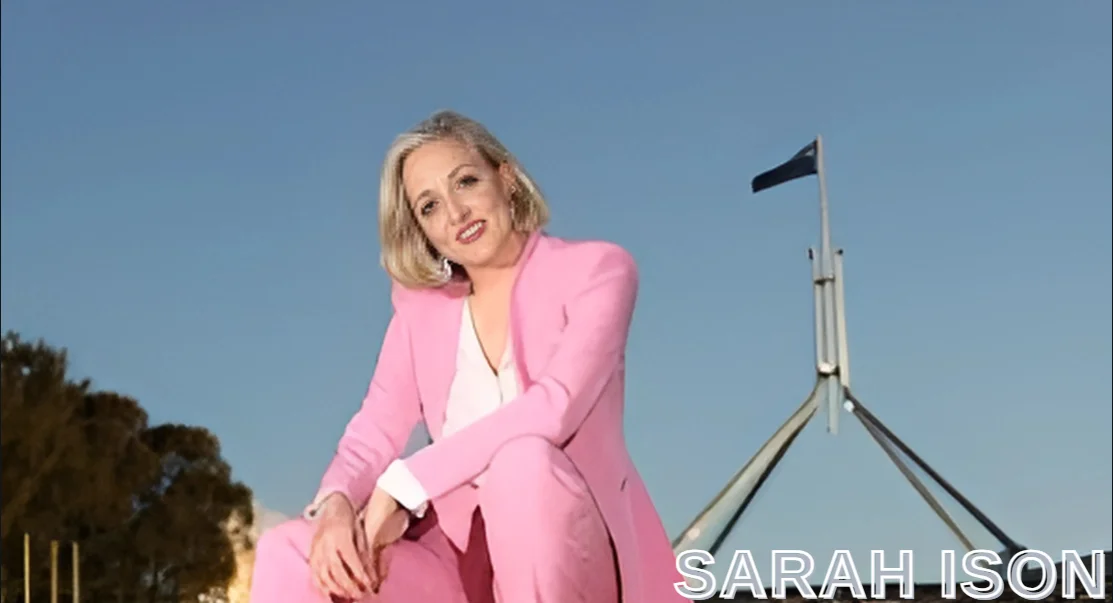
It is a niche that Sarah Ison has created in Australian journalism; a career in Australian politics as a senior political journalist at The Australian, and a successful career as a comedian. The 30-year-old native Western Australian is a symbol of the new generation of journalists utilising humour to make politics easier to understand among ordinary Australians.
Career Path: Regional To National Politics
Ison started her journalism career in 2017 in The Busselton Dunsborough Times in the South West of Western Australia, where she honed her skills in reporting on local emergency services and the environment. This local background was very fruitful, and she learned the basics of community journalism and photography.
Her career path became fast-tracked in 2018 when she joined Seven West Media, serving in the Perth news desk before making the big jump to Canberra as a Federal Political Reporter in August 2019. She also reported on major national events during her time with The West Australian, such as the coronavirus pandemic and has interviewed high-profile politicians such as Opposition Leader Anthony Albanese and former Deputy Prime Minister Kim Beazley.
Ison was made a senior political reporter in The Australian in January 2022, establishing herself as part of the elite press gallery journalists in Parliament House in Australia. She has been reporting on a wide range of portfolios, especially in social affairs, education and defence issues.
The Okay Phenomenon in Politics
What makes Sarah Ison unique in comparison with other political journalists is that she has opened up politics, innovating in her YouTube series called Politics Made Okay (PMO). The show was launched in August 2021 to make Australian politics less confusing to younger audiences who could find traditional political coverage to be dry.
The show has addressed difficult issues in an entertaining and understandable way, such as:
- Pre-election explanation: Australian political parties explained before the 2022 federal election.
- Climate policy, international commitment.
- Rankings of prime ministers and the history of politics.
- Lobbying and back-door experience.
An honest approach by Ison was quite refreshing with regard to the “circus of the ridiculous” in the political scene, but without journalistic compromise. Her catchphrase of making politics okay and bearable to everyone appealed to the people who wanted to gain political education without partisanship.
Festival Circuit and Comedy Career
Sarah Ison has made a name in the Australian comedy scene, besides the journalism field. Her established performance, You Laugh, Therefore I Am, has been touring all over the land with appearances in major festivals such as:
- Perth Fringe Festival
- Adelaide Fringe
- Sydney Fringe
- Circuit Melbourne Comedy Festival.
- Canberra Comedy Festival
The program is a brilliant blend of philosophy and comedy that takes viewers through centuries of philosophical ideas of Plato and Socrates, up to the present-day philosophers. Critiques are very complimentary about her physical comedic talents and ability to perform well in crowds, but mention that the ambitious nature of the format results in unbalanced timing at times.
Personal Background and Age
Sarah Ison was born around 1994-199,5 and she is 30 years old at the time of writing this text, with her milestone birthday in February 2025. She attended the University of Western Australia, obtaining a Bachelor of Arts in Communications and Media between 2013 and 2014.
Her age has also been used to her advantage as she reaches younger audiences that are usually uninterested in conventional political news. She noted that at 26, she could recall vividly what it is like to not actually understand politics, and this put her in a unique position to close the generation gap in the political sphere.
Television and Media Appearances
Ison has already become a household name in Australian television, having featured in:
- ABC -Insiders- Political commentary and analysis.
- The Drum – talking of what is going on and what is political.
- Sky News shows such as Afternoon Agenda.
- Hack- Triple J is appealing to younger audiences on political matters.
Her television career shows that she is a versatile person who can shift quickly between her serious political analysis and less serious and more approachable commentary forms.
Personal Life and Interests
Although Ison does not cross professional boundaries, she does post some personal details on her social media occasionally. Her Instagram feed, sarahisonfire, features the combination of professional updates and personal ones, such as visiting the family in Perth, and behind-the-scenes shots of her comedy shows.
The difficulty of managing her two careers has been forthcoming as she says she is mostly tired of doing her best to balance her dual careers of journalism, comedy, podcasting, and content creation. Her sincerity regarding the expectations of the contemporary media workforce appeals to a reader who also has to deal with such work-life balance issues.
Australian Political Discourse Impact
The unusual role of Sarah Ison as a serious journalist and a comedy performer has left a new dimension in Australian political commentary. The fact that she has the time to interview the government ministers in the daytime and do stand-up comedy in the evening gives her insights that are not accessible to most political reporters.
Her Politics Made Okay series bridged an important need in the Australian media by offering non-partisan political education at a time when the traditional media was being accused of partisan news coverage. The success of the show proved that the audiences were interested in informative and entertaining political content.
Present status and Future opportunities
Being a senior political reporter of The Australian, Ison still does regular coverage of major stories in the country and sustains a career as a comedic figure. Her seat in the Parliamentary Press Gallery gives her the best access to the top of Australian politics, and her comedic history provides her with some of the most insightful information about communication with people and their attention.
The content on her social media indicates that both careers will keep growing, as in the recent posts, she is promoting upcoming comedy shows as well as reporting on breaking political news. This two-pronged strategy puts her in a promising position as the media continues to change, with journalists having to possess a variety of abilities and have direct audience connections.
Sarah Ison, 30, is the future of Australian journalism – knowledgeable in the profession, digitally native, and does not fear employing humour as a means of civic engagement. Her success proves that serious journalism and entertainment may be united in this way, and new directions to political education and democratic involvement emerge.
-

 Business2 months ago
Business2 months agoHow to cancel your Optus plan: A step-by-step guide for Australians
-

 Business2 months ago
Business2 months agoHow to add Flybuys to Apple Wallet: A complete guide for Australians
-

 Business2 months ago
Business2 months agoEveryday Rewards Woolworths loyalty program: How Australians can save more every day
-

 Business2 months ago
Business2 months agoAn Australian traveller’s guide to senior caravan insurance
-
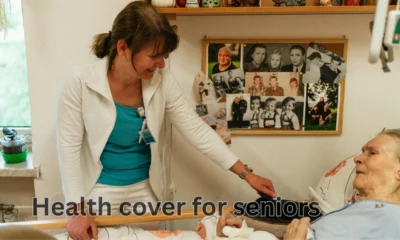
 Business2 months ago
Business2 months agoHealth cover for seniors in Australia – Complete 2025 guide
-
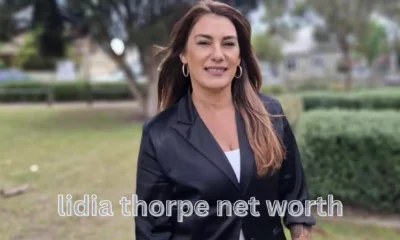
 Politics2 months ago
Politics2 months agoLidia Thorpe Net Worth 2025: Salary, Assets, Career, and Financial Journey
-
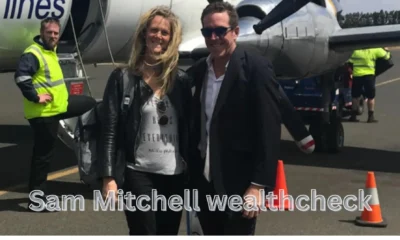
 Business2 months ago
Business2 months agoADM Capital wins a $36 million court case against Sam Mitchell WealthCheck: The story of how an agricultural empire fell apart
-
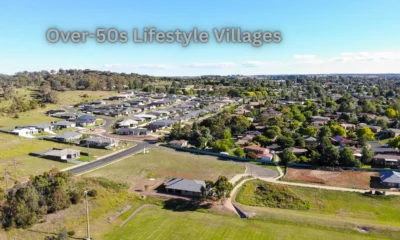
 Business2 months ago
Business2 months agoOver-50s Lifestyle Villages in Western Australia: Comfort & Community


